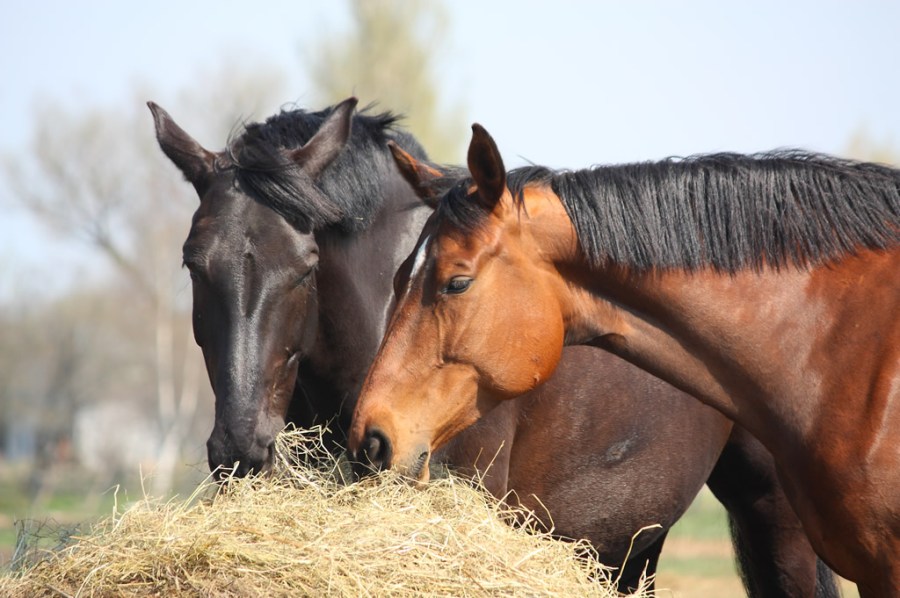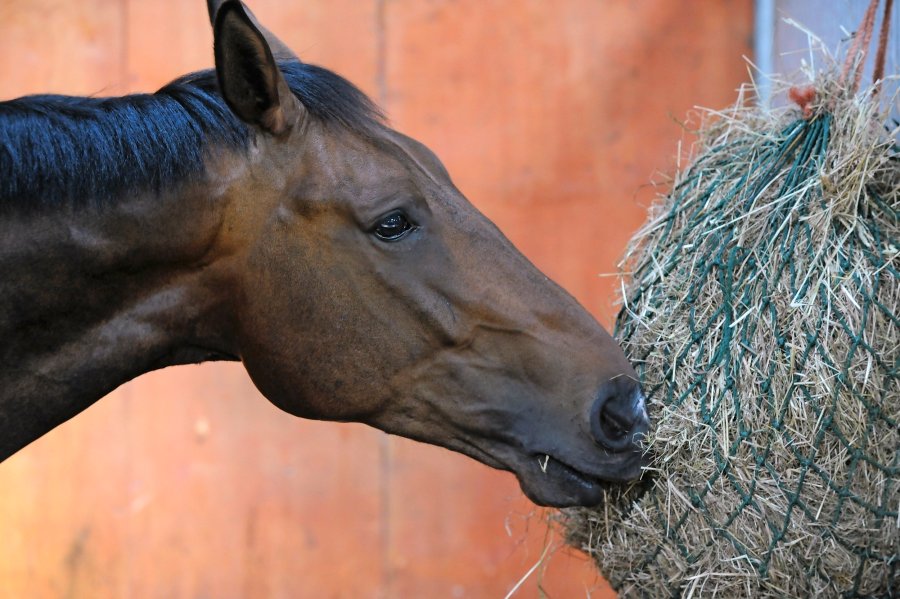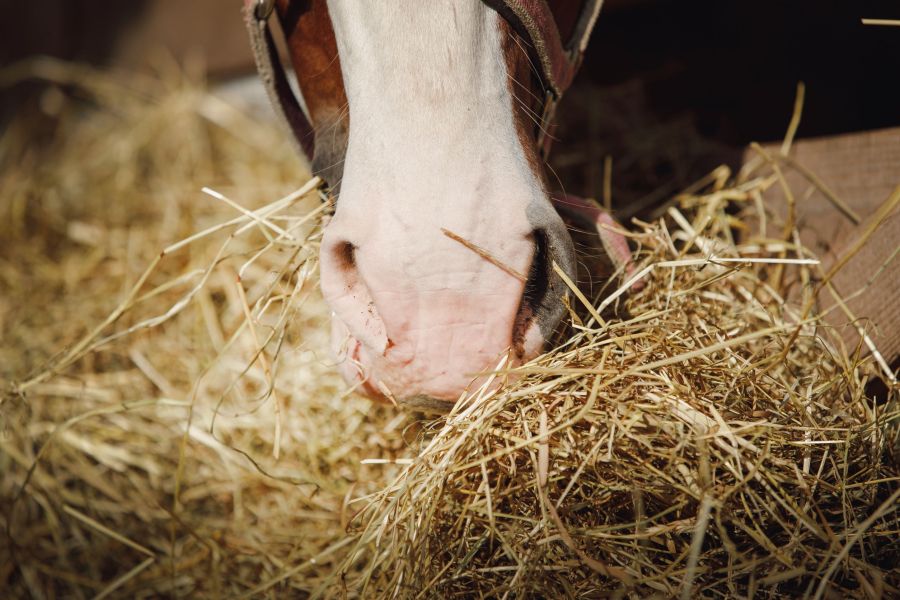Horse owners, farmers and equine charities have shared their concern for the coming winter, with conditions meaning a second cut of hay is unlikely for many parts of the UK, while horses are already making a dent into forage supplies to supplement poor grazing.
Kent-based Jennie Yandle was among the many no longer able to rely on grazing and hard feed alone this summer.
“I’ve definitely been giving hay earlier,” she told Your Horse. “Normally between May to September I can rely on my grazing to give my horses enough energy alongside a hard feed, but since around the middle of June the four I have, have had hay every day and I don’t have any grazing currently, everything is brown and effectively dead.”
She said her hay provider currently hadn’t put their prices up but they were expecting to in September or October.
Securing forage for winter

Event rider and Norfolk-based hay producer Ellie Savory painted a similar picture and said due to rising costs of production and a dry hot spell, her hay yield to date was slightly down on a ‘normal’ year.
The increasing costs of fertilisers and fuel meant she only gave the crop a single dose of fertiliser this year, rather than the normal two, but this hay was cut early, without any rain to cause damage.
However, the continued lack of rain means there won’t be a second cut in September, so what’s in store is all there will be for her local customers this year.
“We supply a couple of wholesale customers who have already purchased 50 percent more hay in August than they usually would,” she told Your Horse. “Equally, as an owner of four horses, I’m noticing that I’m using far more hay than I usually would for the time of year.”
Ellie said owners should prioritise securing enough forage to see them through the winter.
“With no second cuts on the horizon, certainly in the south east where we’ve had very little rain since December, and many farmers cultivating straw back into farmland to save on the costs of P&K and fertilisers, there’s going to be a short supply of both hay and straw this winter and little more will be cut or produced before next summer.”
Jenny Surtess also produces hay alongside running Oxford Retirement Livery on a 268-acre farm. She said the 40 horses in her care did have grass in their fields, but it was like “hay on a stalk” and was not growing.
“It’s really noticeable how dry it has been, plus we had quite a dry winter and spring,” she said. “We have water meadows and two rivers, neither have flooded which has never happened before.
“All the producers we know locally won’t be getting a second cut.”
She said her horses have been given big bales of hay in their fields since the end of June and even if we had a lot of rain now, it wouldn’t make up for three months of no grass growing.
She added that due to the rising prices for those producing the hay, prices will have to go up.
“Farmers are quite good at evening out their costs and they don’t want to frighten customers away, but we will have to see some increase, particularly if people are having their hay delivered,” she said.
However, she said owners could save money on their hard feed bill by prioritising good quality hay for their horse.
“[Owners don’t always realise] how important good quality forage is,” she said. “If you give your horse enough really good forage your hard feed bill [will shrink]. You won’t have the same reliance on hard feed as you think you need to, and it’s better for the horse.”
Essex-based farmer Mark Woricker produces hay, straw and haylage and said it was important to recognise the bigger picture.
He said farmers have incurred price increases on production, including steep increases in the cost fuel and fertiliser, as well being affected by the weather.
“Fertiliser prices have quadrupled so people don’t put it in because they cant afford to,” he told Your Horse. “This reduces yield and then the weather, dry with no rain, has reduced crop further.”
He said his hay has been a lot finer this year and kept its colour better, but East Anglia as a whole has seen large crop reductions and so have his colleagues in Kent.
“There will be no second cut of hay,” he said. “People are going to have to pay more because we’ve incurred huge price increases.”
He added that this year’s straw crop was a clean, low-dust crop, which is “exceptionally dry”, so could offer horse owners a cheaper bedding alternative to shavings.
Cost of living crisis

What does the forecast look like for equine welfare this winter with reduced grazing and reduced hay supplies?
Viki Cooper, Supervisor at World Horse Welfare’s Hall Farm Rescue and Rehoming Centre in Norfolk said it was likely to be a difficult time for many owners.
“We are concerned that we will see more horses coming in as welfare cases as we go into winter and through into spring next year as cost of living rises and availability of hay starts to bite,” she told Your Horse.
“At the moment we haven’t needed to make great changes as we’re still using last year’s hay. We’ve only been able to make one cut from our hay fields though, and we took the smallest crop in years. There’s been little regrowth and these fields – normally reserved for winter grazing – are having to be grazed now, so this winter will certainly see a difference for us and we’ll definitely have to buy in much more hay.”
Redwings has also seen a dip in their forage yield, as the charity grows some of its own hay, and reported similar production cost concerns as the farmers.
“Anything to do with land and forage is different year to year, and this year has been extremely challenging,” chief executive Lynn Cutress told Your Horse.
“Yield from some of our locations is as much as 50 percent down. The price of fertiliser and availability has been a significant problem this year, along with the cost of fuel.”
She said the charity has had to feed hay throughout the summer and in some cases the rate of forage use has almost matched what they would expect to use in mid-winter.
“This of course also impacts on staff time, plus fields that have been rested for winter haven’t grown as much as we would expect,” she said.
“With so many horses to look after on a daily basis, we plan our supplies carefully. We have good relations with several suppliers who help us with sourcing forage, as this is the responsible approach for a charity of our size, and good practice with evaluating what food and forage our horses need under guidance of vets and nutritionists.
“But whilst we have secured what we need for the coming season, as a charity the costs are very concerning and of course this is something we’re keeping a close eye on.
“It’s been a very difficult time for recruitment in the equine sector and our staff have been called upon to adapt to the frequently changing challenges of caring for our horses this year, particularly in the hot weather, for which we’re extremely grateful.
“It’s impossible to predict at this stage exactly what the welfare landscape will look like over the coming months but certainly these are tough times for all horse owners so is something we are monitoring closely.”
While your grazing may not be as good as usual this time of year, it may still be providing enough calories for your horse.
Gemma Stanford, Director of Welfare at The British Horse Society (BHS), recommended a low-calorie balancer or vitamin and mineral supplement to ensure your horse is getting what they need.
“It’s about assessing the level of work the horse is in before providing additional forage, and fat scoring the horse to help evaluate whether they need any additional calories,” she told Your Horse. “It’s important to note that horses aren’t burning as many calories through the summer as they naturally would through the colder winter months to keep warm.”
For more information on the BHS summer care guidance click here
To view advice from The National Equine Welfare Council on cutting costs, click here









